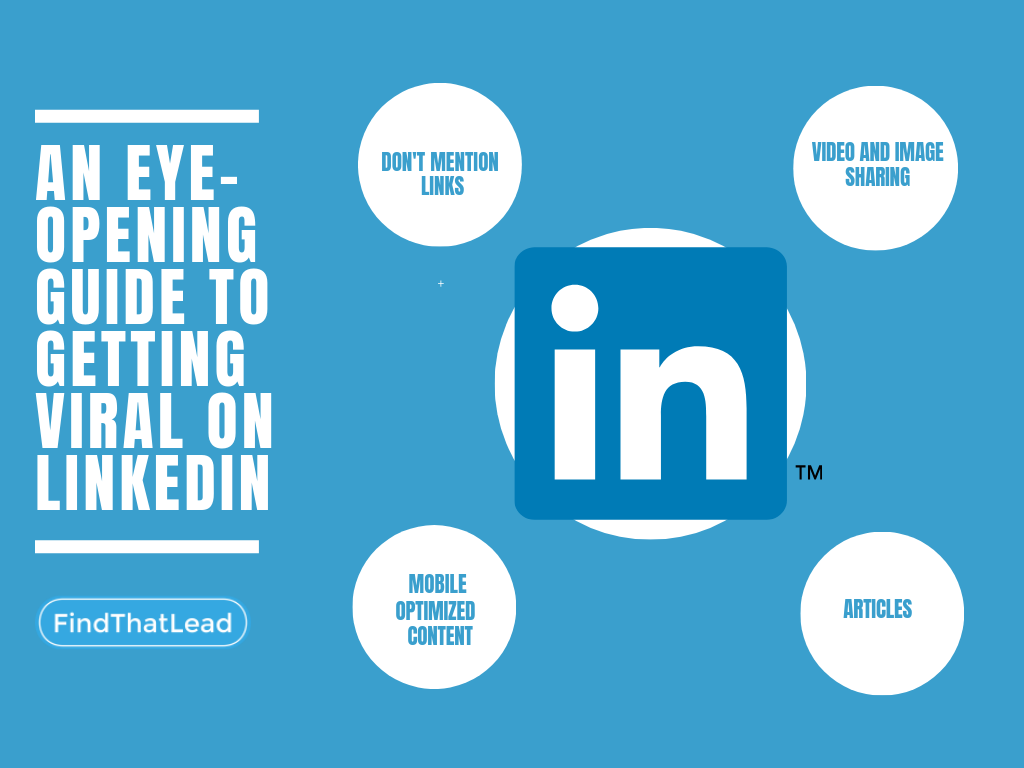
1 billion people are on LinkedIn, but only 0.5% create content that truly stands out.
We’ve studied 1000+ LinkedIn accounts and invested over 3,000 hours of research to understand what drives virality.
Here’s what we found: LinkedIn is one of the largest professional platforms in the world, yet less than 3% of users post weekly.
Of those, only a small fraction produce content that captures attention, educates, and sparks conversations.
This means there’s an enormous opportunity for you.
LinkedIn isn’t oversaturated; it’s underutilized.
Most people still aren’t taking advantage of its full potential.
The demand for educational, value-driven content far outweighs the supply.
This article shares practical steps to help you stand out, grow your brand, and create strong connections. Let’s get started!
1. Quality Over Quantity: The Sweet Spot Is 3-4 Posts a Week
Posting every day is not necessary. In fact, flooding your audience with content can lead to diminishing returns. Instead, I focus on delivering value-packed posts 3-4 times a week.
This frequency strikes a balance between staying top-of-mind and maintaining the quality of each post. Each post is carefully crafted to provide actionable insights or spark meaningful discussions.
2. 25 Daily Comments
The LinkedIn algorithm thrives on engagement. Every day, I leave 25 thoughtful comments on posts by others in my network.
These aren’t generic “Great post!” replies but meaningful contributions that add value to the conversation. This habit positions you as an active participant in your niche, making others more likely to engage with your content.
| Prompt for ChatGPT to Generate a Non-Generic Comment:“I want to write a thoughtful comment on a LinkedIn post. The post is about [topic or key points in the post]. Can you help me craft a comment that adds value, engages the author, and encourages further discussion? And make it conversational.” |
3. 5 Appreciation DMs Daily
Gratitude is a powerful connector. Each day, I send five personalized appreciation messages to people I’ve engaged with—thanking them for their posts, insights, or simply the inspiration they’ve provided. These authentic touchpoints turn passive connections into active relationships.
DM Template Example:
| “Hi [Name], I came across your recent post about [specific topic], and I found it incredibly insightful. Thank you for sharing your perspective! I’d love to connect and exchange ideas if you’re open to it. Looking forward to staying in touch!” |
4. DMing Profile Viewers
Timing is critical. Within an hour of posting, I DM 5 people who viewed my profile. A simple, friendly message can open the door to conversations, collaborations, and new opportunities. This proactive approach often converts viewers into followers and advocates.
DM Template Examples:
| “Hi [Name], I noticed you viewed my profile recently—thank you! I’m always looking to connect with like-minded professionals. Let me know if there’s anything specific that caught your interest or if there’s a way I can help you. Looking forward to connecting!” |
| “Hi [Name], I saw that you recently viewed my profile. I’d love to connect and learn more about your work in [industry/field]. Let me know if there’s anything specific you’d like to discuss or collaborate on!” |
5. Are Videos the new virality formula?
Videos are one of the most engaging formats on LinkedIn right now, with many creators seeing significantly higher impressions and engagement rates compared to text or image posts.
They help you connect authentically with your audience, showcase your personality, and explain complex ideas in a simple way. In fact, video content is shared 20 times more than any other format on LinkedIn.
How to Use Videos Effectively:
- Keep It Short: Aim for videos under 2 minutes to maintain attention and align with LinkedIn’s fast-scrolling behavior.
- Add Subtitles: 85% of videos on LinkedIn are watched without sound, so always include captions to ensure accessibility.
- Focus on Value: Share a quick tip, a personal story, or behind-the-scenes insights that align with your niche.
- Make the First 3 Seconds Count: Hook your viewers early with a powerful question, bold statement, or intriguing visual.
- Include a Call-to-Action: Encourage viewers to comment, share, or engage by asking a specific question or offering a takeaway.
For a deeper dive into crafting LinkedIn videos, check out this guide: Buffer’s LinkedIn Video Strategy.
6. Focus Is Key: One Topic Per Post
Each post zeroes in on a single, well-defined topic. This clarity enhances readability, positions you as an authority, and makes your message more memorable.
Readers appreciate a clear takeaway they can immediately apply.
Example: This post by Lara Acosta talks about one main theme, and doesn’t digress into 10 different directions.

7. Hooks That Stick: Always Start with a One-Liner
The hook is the entry point to your content. A snappy one-liner—thought-provoking or intriguing—compels readers to stop scrolling and dive in.
Hook Guidelines:
| A Basic Starting Point: Write a simple, clear opening line that immediately grabs attention. Add a Timeline: Include urgency or time-related cues like “In the last 30 days…” or “By the end of this week….” Add Numbers: Use data or figures to make your hook impactful, e.g., “1 billion people are on LinkedIn, but only 0.5% stand out.” Add a Topic: Mention a specific subject your audience cares about, e.g., “The secret to mastering LinkedIn engagement.” Add Curiosity & Power Words: Create intrigue with phrases like “You won’t believe…” or “Here’s what no one tells you….” Power words like “proven,” “revealed,” or “exclusive” enhance engagement. Here’s a list of 700+ power words for YOU. |
Examples of Great Hooks:


8. Stick to 3-4 Core Topics
Imagine if tomorrow Gary Vee started talking about beauty products or Codie Sanchez began promoting YOLO lifestyle tips. It’s hard to believe, right? That’s because they have stuck to their core topics for a long time and are now synonymous with those subjects.
Repetition of themes helps position you as a trusted voice in your niche. By repeatedly sharing insights on specific topics, you reinforce your expertise and make it easier for your audience to associate your name with those areas.
Why Repetition Matters:
- Recognition: Repetition builds familiarity, and familiarity builds trust.
- Algorithm Favorability: Posting consistently within a niche helps LinkedIn’s algorithm show your content to the right audience.
- Audience Loyalty: Sticking to a few topics ensures your audience knows what to expect and keeps coming back.
How to Land on Your 4 Core Topics:
- Identify your expertise.
- Align with your audience’s needs.
- Evaluate trends in your industry.
- Pick topics you’re passionate about for sustainability.
9. Timing Matters
After extensive testing, I’ve found that 12:30 PM works best for my audience. Posting consistently at the same time builds anticipation and maximizes reach. However, it’s essential to experiment with different times before committing to one.
What to Think About When Deciding a Posting Time:
- Consider your audience’s time zone.
- Post during work breaks or commute times.
- Analyze past post performance for patterns.
- Experiment with different times over a few weeks.
- Stick to a consistent schedule once you find what works.
Check this article by Taplio on best posting times on LinkedIn.
10. Boost Engagement with Mini-Posts
Mini-posts beneath the main content add value and encourage interaction. Another common tactic we’ve seen work for our clients is writing mini-posts in the comment section of their own posts.
This shows that you’re always giving away value while also providing the initial push required in the first 30 minutes when the post goes live.
What to Write in Mini-Posts:
- Expand on a point from your main post.
- Share quick, actionable tips.
- Address FAQs or anticipated questions.
- Provide links to related resources or tools.
- Pose a question to spark discussion.
Example:
11. The Golden Hour After Posting
The first hour after posting is crucial. During this time, LinkedIn’s algorithm closely monitors engagement levels to determine whether your post should be shown to more people.
Why This Hour Matters:
- High initial engagement increases reach.
- Active participation ensures more eyes on your content.
- Prompt replies show you’re present and invested.
What to Do in the first 60 minutes:
- Respond to comments quickly and thoughtfully.
- Comment on other posts to stay active.
- Share your post with relevant groups or connections.
- Add a mini-post under your content to spark conversation.
- Monitor analytics to understand performance trends.
12. End with a P.S. Question
Every post concludes with a P.S. and a question to invite engagement. For instance: “P.S. What’s one strategy you’ve tried on LinkedIn that boosted your reach?”
Why It Works as a Prompt for Engagement:
- Encourages interaction and fosters two-way conversations.
- Increases comment volume, boosting algorithm visibility.
- Builds a sense of community by inviting participation.
- Signals approachability and openness to dialogue.
Tips for Effective P.S. Questions:
- Keep them relevant to the post topic.
- Use open-ended questions for detailed responses.
- Make them conversational to spark interest.
13. Ask for Reposts
Don’t shy away from asking your audience to repost your content if they find it valuable. Reposts can significantly amplify your reach by exposing your content to a broader network.
Why Reposts Matter:
- Extended Visibility: Reaches new audiences beyond your network.
- Social Proof: Acts as an endorsement of your content.
- Algorithm Boost: Shares increase post prioritization.
- Community Building: Invites participation in spreading your message.
How to Ask for Reposts:
“Feel free to share this with your network if you found it helpful!” Simple, clear, and effective.
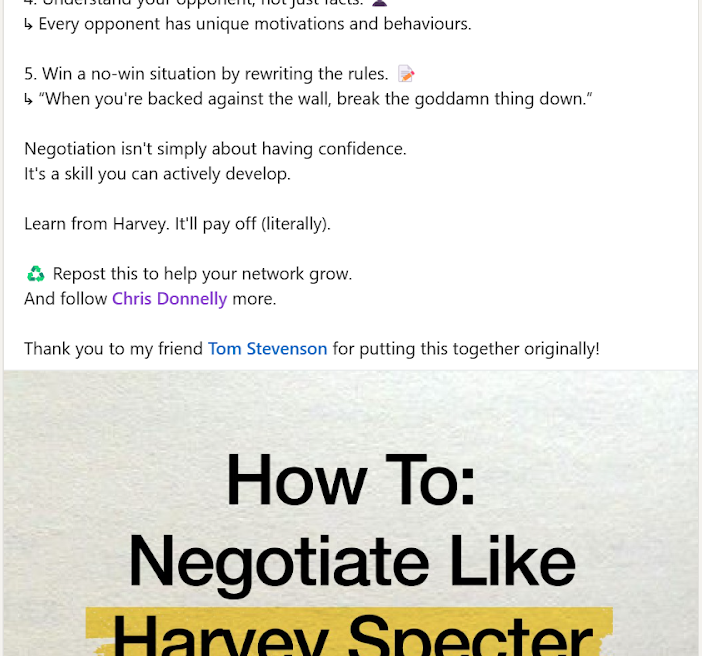
14. Text vs. Image Posts
Both text-only and image posts can perform well, depending on your audience and content. While images add visual appeal, text posts can be equally impactful if the message is strong.
Tips for Choosing the Right Format:
- Use images when they complement your story (e.g., graphs, infographics).
- Stick to text for clear, concise storytelling or thought leadership.
- Experiment with both formats to identify what resonates with your audience.
15. Keep Posts Concise
Attention spans are short. My posts average a 43.57-second reading time, ensuring they’re concise yet impactful.
Write like you’re explaining it to a 5th grader. Don’t lace your content with fancy words—simplicity is key. Keep the post concise, to the point, and easy to understand.
Example of a concise post, written for virality:
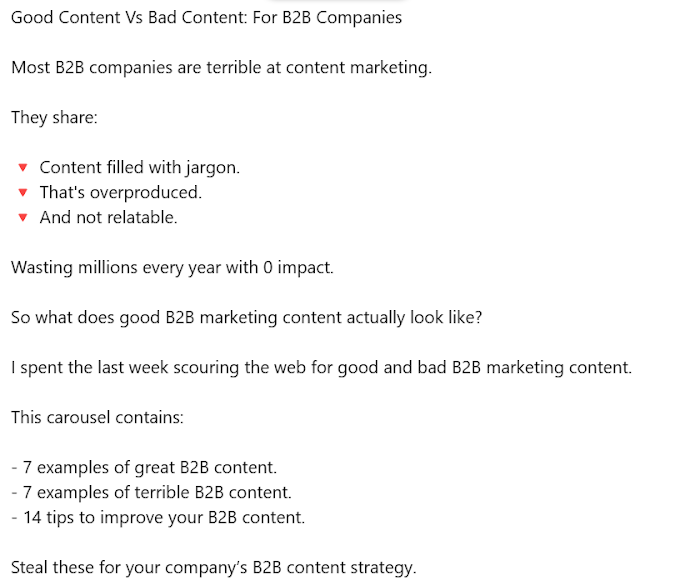
16. Reposting After 8-10 Hours
Reposting high-performing content 8-10 hours later can reach a different segment of your audience. This tactic maximizes visibility without additional effort.
Why Viral Brands Repost:
- Different time zones mean different active users.
- Posts that did well before are likely to perform well again.
- Make the most of your top-performing content.
Repost like this:
17. Formatting is Everything
Formatting can be the silent hero of your content. It determines whether someone reads to the end or scrolls past. Use headers, bullet points, and short paragraphs to improve readability.
Tips for Formatting:
- Use line breaks to prevent your content from looking cluttered.
- Highlight important points with bold text or emojis (sparingly).
- Keep paragraphs to 1-2 sentences for better mobile optimization.
- Ensure the first 2 lines hook your reader—they determine whether they’ll click “see more.” These small but impactful actions can drive exponential growth in your LinkedIn presence.
Example of a badly formatted post:

Example of a well formatted post:

The Tool Stack We Swear By
The tool stack we swear by: (more on this in upcoming articles!)
- ChatGPT: For brainstorming and content ideation.
- Taplio: For optimizing your LinkedIn presence and engagement.
- Kleo – LinkedIn Content creation tool
- Claude: For generating high-quality written content.
- LinkedIn Scheduling Feature: To schedule posts and maintain consistency.
- Canva: For creating visually appealing designs and templates.
- Expandi.io: LinkedIn outreach automation
- Shield Analytics: To track engagement metrics and refine your strategy.
These tools form the backbone of an effective LinkedIn strategy, helping you streamline your workflow, create high-quality content, and measure your results effectively.
Conclusion
On LinkedIn, virality can be engineered.
Strategy, consistency, and authenticity are your tools. It’s one of the last platforms where effort directly drives results.
The algorithm rewards value—educate, inspire, engage, and watch your influence grow.
The LinkedIn boom is just beginning.
Seize the moment, define your niche, and make your name impossible to ignore.
Subscribe To Get Update Latest Blog Post

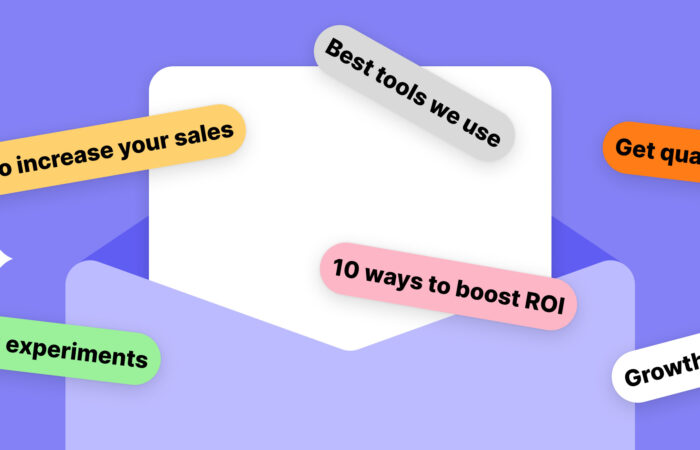
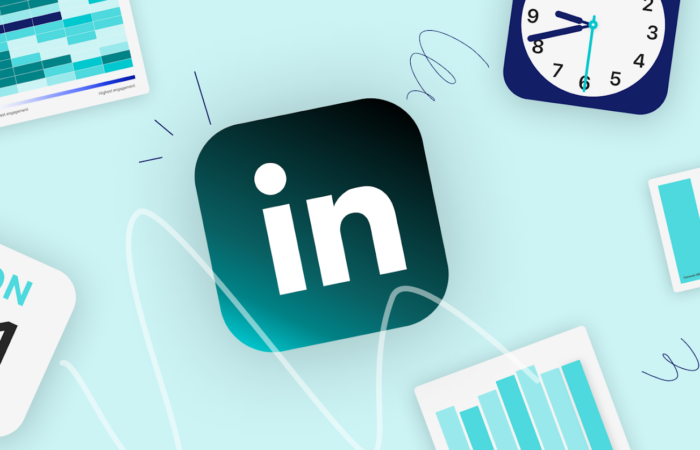
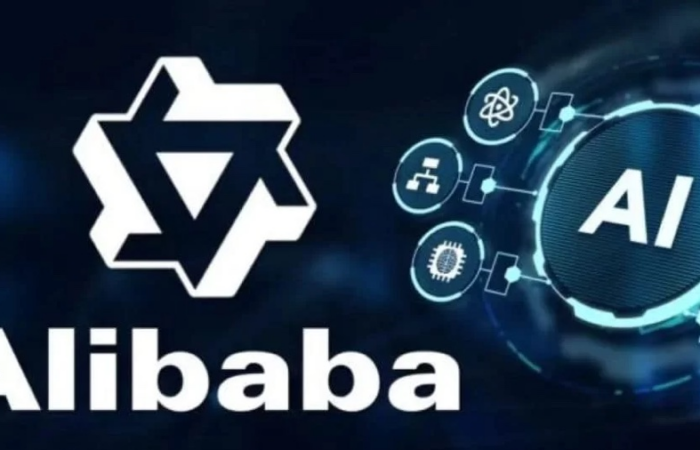
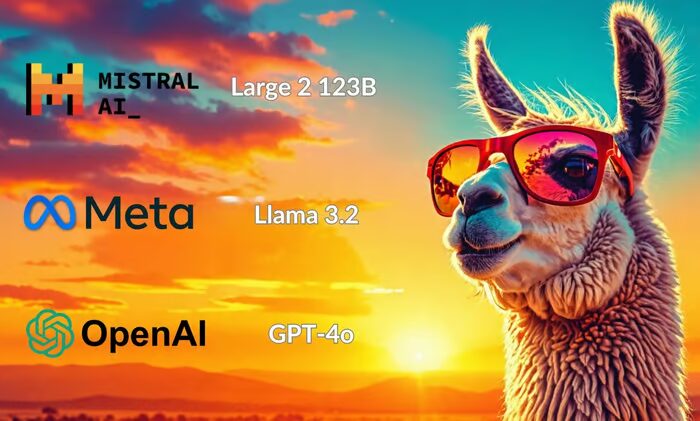




Leave Your Comment: